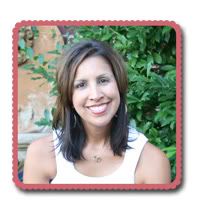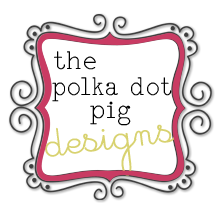Hi
Everyone,
It’s
time for a reminder on the environment ;).
There
has been a lot of buzz in the scientific community (again!) about the
environment and its relationship to cancer. Janet Gray, Ph.D., Director of the Program in Science,
Technology, and Society, Vassar College speaks about this issue in this
month’s Inside Integrative Medicine
newsletter. Regarding breast cancer she
states that scientists are increasingly
coming to understand that many chemicals commonly found in products we use
daily may also be contributing to the very high incidence of breast cancer. We
need to better understand the health effects of these environmental chemicals,
especially so-called endocrine disrupting compounds (EDCs) in pesticides,
plastics, many personal care products, etc. This knowledge may lead us to
undertake actions that aim to prevent the disease.
This
is so interesting, particularly for women like me who have no family history of
cancer and wonder- what is going on in my environment? If we can identify environmental risk factors
for breast cancer, or any cancer, what a tremendous opportunity for prevention
we would have! One report that came out
this year is a must read for anyone with breasts- ok that’s all of us. The report is called Breast Cancer and the
Environment: Prioritizing Prevention https://www.niehs.nih.gov/about/assets/docs/ibcercc_full_508.pdf . The report reminds me of the grim stats (in
my opinion) on breast cancer. In 2012,
it was estimated that 227,000 women and 2,200 men in the United States would be
diagnosed with breast cancer, while approximately 40,000 women would die from
it. Ugh.
The report looks at the life span starting with a fetus. It looks at breast/ mammary gland development
as the foundation of breast cancer etiology then looks at the breast changes
through puberty, pregnancy, etc. I
honestly have never thought about the environmental toxins my mom may have been
exposed to when she was pregnant with me.
I guess if I looked hard enough I would find toxins every step of the
way during my lifetime. I sure hope that
I am making changes that will decrease my children’s risks.
What
can we do now about environmental toxins that will decrease our cancer
risks? Janet Gray gives us these tips:
•
Avoid plastic water bottles and Styrofoam containers. Did you know that plastics and food
packaging from around the world has been associated with more than a dozen
serious health problems, including reproductive system abnormalities, cancer,
behavioral disorders and diabetes? The
measurable data is there.
•
Never microwave food in plastic or Styrofoam.
I use
the Pyrex (made in the USA!) glass containers, take the lid off and cover with
a paper towel.
•
Eat fresh or frozen foods, not canned, unless can is lined with bisphenol-A
(BPA)
free plastic. Most canned food is lined with BPA; however
starting in 2012, companies like Campbell’s Soups and Amy’s started phasing out
BPA. Some brands with BPA free cans
include Eden, Trader Joe’s, Hunts Tomato Products, Ocean Brand. You still have to read the can because not
every one of their products is BPA free.
Read more info on BPA here at the Environmental Working Group website- http://www.ewg.org/bpa/
•
Go fragrance free in both personal care products and household cleaning
products. This is hard for me, particularly with
perfumes. EWG has an extensive database
of every kind of personal care product possible. You could spend hours on this site figuring out
what are the best products for you and your family. Take a look at this guide for sunscreens,
they even have an app you can keep on your phone to use at the store. http://www.ewg.org/2012sunscreen/all-sunscreens/ As far as house cleaning agents, this list
surprised me! Even a brand like Method
that I use a lot failed in some areas on toxicity, this is a must read guide http://www.ewg.org/guides/cleaners
•
Remove plastic bags and air out garments that have been dry-cleaned
before
wearing them or putting them in closets or drawers.
•
Choose products that have detailed ingredient labels and don’t contain known
EDCs
(e.g., parabens, phthalates, BPA). Contact companies for information ifyou have concerns about their ingredients. I find that a lot of hair and skin products are free from parabens and phthalates- and they just aren’t sold at Whole Foods. HEB, Kroger and Target all carry clean lines like Hugo Naturals, Burt’s Bees, California Kids and Kiss My Face. Again, take a look at EWG for ratings on hair and skin care products. http://www.ewg.org/skindeep/
•
Minimize the use of pesticides and herbicides, especially when using them for
cosmetic
landscaping purposes. And don’t forget
to read the EWG’s clean and dirty list- what is a must when purchasing organic
foods. In a nutshell, BUY ORGANIC:
apples, celery, cherry tomatoes, cucumbers, grapes, hot peppers, nectarines,
peaches, potatoes, spinach, strawberries, sweet bell peppers, kale, collard
greens and summer squash/ zucchini.
Whew!
Decreasing
your cancer risk by evaluating your environment can be overwhelming and not to
mention, expensive. Start small, perhaps
evaluating what containers your kids use for their school lunches (Pottery Barn
has some cute ones) or what sunscreen to purchase next. Then go from there.
Helpful Links
Environmental
Working Group- http://www.ewg.org/Cancer Prevention and Treatment Fund- http://www.stopcancerfund.org/prevention/environmental-exposures/
The Breast Cancer Fund- http://www.breastcancerfund.org/#

















